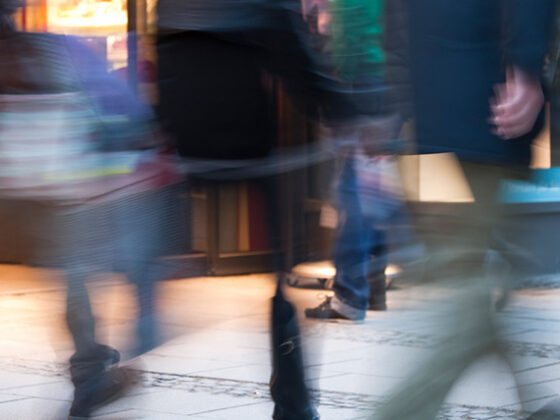I’ve been spending a lot of time these days thinking about the future of retail. And what I think about most is how much opportunity there is. How much opportunity? Well, I’m so confident in retail and what retail means to consumers, that even in the midst of a pandemic, we have acquired and merged with one of the most respected retail design organizations.
Even as we grieve the unimaginable losses this country has endured over the last year – and I do grieve – as a business leader, I must recognize that the pandemic has also allowed us to see our world, our roles in it, and the future with new perspective. We have all been changed. And that has a significant impact on redefining retail.
Covid-19 Forced a Reckoning
The shift in the world has been palpable. People suddenly realized that they could work from home and, despite a few Zoom mishaps, business would go on. People are spending more time with their families, more time on creative pursuits, and more time envisioning a future that embraces humanism and sustainability – and their loyalty will be to those brands that are aligned with this vision of the future. They crave something new – something different – something human. The idea that you wouldn’t know it wasn’t local is the driving force. They care if your products are sustainably and ethically sourced, if your people are paid a living wage, and if you contribute positively to their neighborhoods, towns, and regions. They want a holistic experience in which they can access those brands without regard for where or how the interaction takes place.

Online Only Still Doesn’t Work
Before we give in to the few short-sighted analysts who point to a perfect future of online-only retail, let me just say right now – online only doesn’t work. It has not worked in the past, and it is especially clear that it won’t work in the future. Amazon and our existing infrastructure offer the best examples of pinch points in an already flawed system which causes deep strains on everything. Yet, shopping malls are still not back to normal and some question whether they ever will be. If anything, consumers are more ready than ever to get back inside the shops. But the look, feel, and delivery will all be different. And if you were on the fence about needing to provide a seamless experience to your consumers, and if you’re still in business, then you can no longer wait.

Huge Opportunity for New Brands
According to the current administration, by this summer, every adult who wants to be vaccinated will have the ability to do so. This means that we should already be knee-deep in planning for the summer, for we are going to see herd immunity, the economy, and that deep pandemic restlessness all converge on retail. There’s a lot up for grabs for new brands that can come into the existing retail landscape with a new approach – one that is wholly focused on consumers and their changing needs. And consumers have changed.
How to Reach Tomorrow’s Consumer
We’ve been talking for a long time about consumer-centric retail strategy. But what does the customer experience mean to the consumer? Technology? Good feelings? Consumers are getting screen fatigue and they’re lonely. They’re ready to shop. But their priorities have changed. They’ve discovered new needs and wants. They’ve realized what they can live without. Consumers know they can place an order from their living room at 3 a.m. and pick it up curbside at 10 a.m. But they still miss the pure tactile pleasure of walking the aisles, trying on clothing, and being cared for. At the same time, they are still hesitant about how safe it is to do any of this.
So, How Do We Redefine Retail for the Consumer?
The obvious answer is that consumers are the ones redefining retail, and we just need to listen. But I think it begins by redefining retail priorities. And this is where the combined power of ASG + Chute really shines. Not only do you need to understand how consumers are shopping more in their own neighborhoods, but you need to understand that the store you design and the holistic experience you deliver can’t be driven off the flagship store you build in NYC. You need flexible store designs that can be modified to meet the local need – sometimes bigger, sometimes smaller, and always with a local feel. And you can’t invest as much in the up-front design process. Instead, you must embrace an iterative process where you get it out there, learn, and refine.




